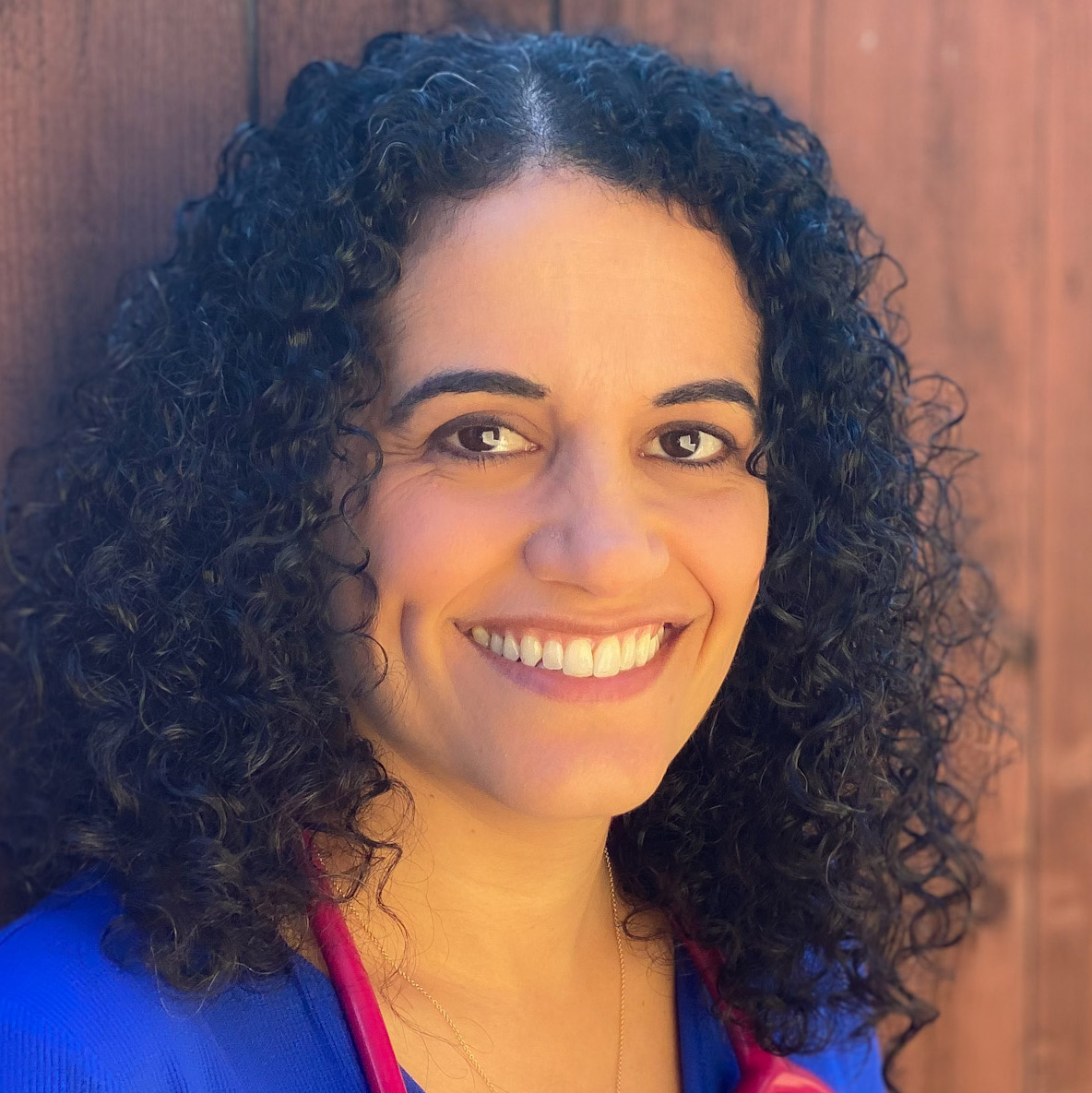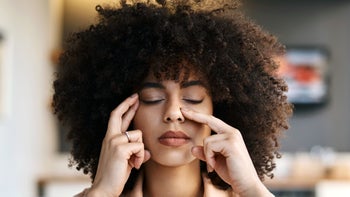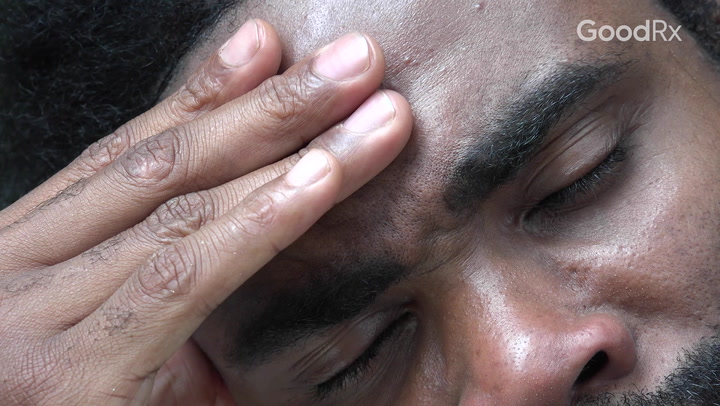
Alternative Treatments and Home Remedies for Migraine Relief
Key takeaways:
Evidence shows that some home remedies for migraines, like certain vitamin supplements, can be helpful. But other natural remedies, like essential oils and daith piercings, aren’t backed up by science.
Holistic approaches to migraines may include the use of acupuncture, massage, or migraine glasses.
There are four FDA-approved medical devices to treat migraines. These devices give electrical signals to the brain and can be used at home.
Table of contents

Migraine headache is one of the most common neurological conditions in the U.S. And many people find relief with treatments, like over-the-counter (OTC) and prescription medications.
But some people prefer to use natural or home remedies to treat their migraine symptoms. And others may be looking for options with fewer side effects than their prescription medications. About 50% of people who experience migraines report using some type of natural or alternative treatments for migraines or severe headaches.
Here, we’ll review some common natural treatments for headaches as well as a few newer migraine treatment options.
Save over 40% on Qsymia with GoodRx
Discover the once daily Qsymia for weight management. Qsymia is for adults and children 12-17 in combination with a healthy diet and regular exercise.

Home remedies for migraines
If you want to get rid of your headache naturally, there are many effective options you can try. Remember, it’s not all or nothing. Migraine treatments at home can be used along with medication. In this section, we’ll review what the research shows about potential home remedies for migraine headaches.
1. Supplements
Research indicates that some supplements may be helpful for preventing and managing migraine headaches. Here are the supplements with the most research to back up their effectiveness:
Magnesium: Magnesium is a mineral that may help prevent and treat migraines. It seems to be most helpful for people who have migraines with aura and menstrual migraines.
Riboflavin: Also known as vitamin B2, riboflavin may be low in people who get migraines. Several studies show that taking riboflavin can prevent migraines, particularly in adults.
Coenzyme Q10 (CoQ10): CoQ10 is a powerful antioxidant made naturally in the body. A review of six studies found that people who took CoQ10 had fewer migraines, and their migraines didn’t last as long. It didn’t change the severity of their headaches, though.
Omega-3 fatty acids: Multiple studies support the use of omega-3 fatty acids to help decrease both the frequency and severity of migraine headaches.
Ginger: Ginger doesn’t seem to prevent migraines. But it does help reduce pain, nausea, and vomiting with attacks.
2. Essential oils
Essential oils are often inhaled as part of aromatherapy or applied topically to the skin. Some believe that essential oils might be helpful for preventing or treating migraine headaches. However, there isn’t good evidence to support this idea.
One small study found that people who inhaled lavender oil during a migraine attack had more improvement in their headaches than those who smelled a placebo. But a larger review of seven studies found that using essential oils didn’t lower the frequency of migraines or improve the severity of headaches.
Generally, essential oils are considered safe with minimal side effects. So, if you’re interested, you can see for yourself if using essential oils helps you feel better during a migraine attack. But keep in mind that they can also have side effects. Essential oils can lead to skin rashes, like allergic contact dermatitis.
3. Butterbur
Some people use extract from the butterbur plant (Petasites hybridus) as alternative medicine. The American Academy of Neurology, as well as the American Headache Society, used to recommend butterbur as an effective natural remedy for migraine prevention. But both organizations later removed this recommendation altogether due to safety concerns.
A big reason for the safety concerns is that the butterbur plant contains toxic compounds called alkaloids. If these compounds aren’t taken out during the manufacturing process, they could lead to:
Liver damage
Lung problems
Cancer
Blood clots
Medications for migraines: What are your options when home remedies aren’t cutting it? Here are the best treatments for migraines.
FDA-cleared migraine devices: These devices use tiny electrical signals to affect the nerves involved in migraines. Learn which devices need a prescription and how they work.
Living with chronic migraines: Migraines aren’t the same for everyone. Learn how three people manage their migraines.
With long-term use, butterbur might lead to liver damage, even if it doesn’t contain alkaloids.
Given these potential issues, butterbur isn’t generally recommended.
4. Feverfew
Feverfew (Tanacetum parthenium) is a plant that has leaves that look like chrysanthemum and flowers that look like daisies. Feverfew grows throughout the world. It has been used to help treat things like migraines, joint pain, and minor pain.
The research on feverfew for migraines is mixed. Some studies suggest that feverfew can help prevent migraines, while others show that it doesn’t work better than placebo.
Feverfew can lead to mild side effects, like stomach discomfort and mouth ulcers. But these usually go away on their own. It isn’t safe to use feverfew while pregnant because it could potentially lead to preterm labor. Also, if you’re allergic to plants in the daisy family (like ragweed), you may also be allergic to feverfew.
5. Cannabidiol (CBD) oil
CBD is one of the active compounds in the cannabis plant. CBD doesn’t have the same psychoactive effects as tetrahydrocannabinol (THC).
Research on cannabidiol is promising. Some studies have found that cannabidiol can help prevent migraine headaches and help migraine headaches go away faster. But it hasn’t been studied well enough to know for sure if it helps. And there aren’t clear dosing recommendations. New studies will hopefully help us understand how to use CBD for chronic pain, including headaches.
As with other herbal extracts, you’ll want to talk to a healthcare professional first to see if CBD is right for you. CBD can have serious side effects. You’ll also want to be sure that you’re buying CBD or any other supplements from a trusted source, since the FDA doesn’t regulate supplements.
Alternative treatments for migraines
In addition to at-home remedies, there are alternative treatments for migraines that might help prevent or treat migraine headaches. These are often used as part of a holistic approach to migraine headaches. Here, we’ll review which methods have evidence behind them and which don’t.
1. Acupuncture
People have been using acupuncture for thousands of years. An acupuncturist places thin needles into different areas of the body to relieve pain and improve health.
A review of 22 studies suggests that acupuncture may be just as effective as medications for migraines. Plus, people who had acupuncture reported fewer side effects compared to those taking preventive medications. Long-term effectiveness of acupuncture for migraines isn’t known and requires additional research.
2. Massages
Aside from being a great way to unwind, massages may help prevent migraines. They may do this by lessening the stress that can trigger a migraine headache. One small study showed that after 5 weekly massage sessions, people had fewer migraines and improved sleep quality. However, bigger studies are needed to know for sure if massage is helpful, and to uncover what type and frequency of massage is best.
3. Daith piercings
Daith piercings are a form of body piercing that goes through the small, thick fold of cartilage right above your ear canal. Think of it as the innermost part of your ear. Many people get daith piercings for aesthetic reasons. Some people report that it can help migraines and relieve migraine pain. But there’s no good evidence to say that it’s effective. Plus, the process comes with risks. Cartilage piercings carry a high risk of infection, and they can be quite painful.
4. Botox
Botox is a form of botulinum toxin, a chemical produced by bacteria that blocks nerve activity in muscles, temporarily paralyzing them. It’s best known as a quick cosmetic procedure to get rid of wrinkles and fine lines. But it’s also FDA approved to prevent migraine headaches in certain people. During treatment, a healthcare professional injects small amounts of Botox into seven key areas of the head and neck. This blocks the release of chemicals involved in migraine pain.
Botox can help prevent migraines. But it may take several treatment cycles before you see a benefit. The effects of each treatment last about 12 weeks, and studies have shown that it can help reduce how often you get headaches.
5. Migraine glasses
Blue light and fluorescent light can increase light sensitivity and make migraine headaches worse. People who experience migraines tend to be more sensitive to light than others. So, it’s possible that glasses that block these types of light might improve migraine symptoms.
These special glasses have FL-41 tint (“FL” refers to fluorescent), which filters out specific blue and green wavelengths of light. There’s limited evidence that these glasses might lead to a modest improvement in migraine symptoms. More research is needed.
6. Medical devices
The FDA has approved four devices to prevent and treat migraine headaches. A prescription from a healthcare professional is required for most of them. These devices work by sending electrical signals to different nerves involved in migraine attacks. Here’s how each device works:
Cefaly Dual can help prevent and treat migraine headaches. The device is attached to an electrode, which is then placed on your forehead for treatment. This is the only device on this list that can be purchased without a prescription.
The Relivion system is a headband device to treat migraines in adults ages 18 or older. It isn’t used to prevent migraines.
GammaCore stimulates the vagus nerve, which is believed to play an important role in blocking pain signaling associated with migraines and cluster headaches. It’s a portable handheld device that’s placed on either side of the neck.
Nerivio stimulates the nerves in the upper arm, helping to control and stop migraine attacks. During treatment, a portable device is attached to your arm, and the device is controlled through a smartphone.
Does exercise make migraines better or worse?
The relationship between exercise and migraines is tricky. For some people, exercise can trigger migraine attacks. This seems to happen more often to people who have neck pain as one of their early migraine symptoms. But regular physical exercise can lower the number of migraine episodes you have.
The key to using exercise to help your migraines is to do it regularly. Scientists aren’t sure exactly why exercise seems to help. But research suggests that exercise releases chemicals that change how your body perceives pain.
The best type of exercise for migraine prevention is yoga or moderate- and high-intensity aerobic exercise.
How to avoid migraines
Migraines can be severe and disrupt your life in more ways than one. It helps to avoid migraine triggers. Triggers aren’t the same for every person.
Here are some of the most common triggers:
Stress: Stress is a trigger for almost 70% of people with migraines. Stress-reduction techniques — like mindfulness and progressive muscle relaxation — can help you lower your stress levels.
Bright lights, loud noises, and strong smells: Many people find that their migraines are triggered by strong sensory input, like bright lights and strong smells. Consider asking for workplace accommodations if you find that these triggers are causing headaches when you go to work.
Certain foods: Common triggers include cheese, processed meats, artificial sweeteners, nuts, and citrus fruits. Coffee and alcohol are also common triggers.
Lack of sleep: Keeping a regular sleep routine is especially important for people who experience migraines.
Hormone changes: Some migraines are triggered by hormonal shifts during menstruation or perimenopause.
Frequently asked questions
The fastest way to cure a migraine is to take some medicine — either an over-the-counter or prescription migraine medication — and then do the following:
Rest in a dark, quiet room.
Place a cool cloth on your forehead.
Drink water.
Try to sleep.
The best drink for a migraine is something that hydrates you fast without making the migraine worse. For example, water and electrolyte drinks are helpful. But avoid alcohol. For some people, a strong cup of coffee is the best drink, since caffeine may stop the migraine attack. Ginger tea can also help if you’re vomiting.
Not everyone experiences all four stages of a migraine, but many do. These stages are:
Prodrome: You might feel tired, moody, or crave certain foods for a day or two before the headache starts.
Aura: These are visual or other sensory changes that happen 5 to 60 minutes before the headache.
Attack: This is the painful headache we think of as a migraine attack.
Postdrome: The headache is gone, but you might feel tired or “foggy” for a while.
The bottom line
If you’re interested in natural or alternative treatments, certain supplements (magnesium, riboflavin, coenzyme Q10, omega-3 fatty acids, ginger), acupuncture, Botox, and FDA-approved medical devices can be a good place to start. These options may be useful alone or together with more traditional medications to treat headaches. Remember to pay attention to your personal triggers, like bright lights or strong smells. Sometimes small tweaks can make a big difference.
Why trust our experts?



References
Ahn, A. H., et al. (2013). Why does increased exercise decrease migraine? Current Pain and Headache Reports.
Allergan Pharmaceuticals. (2010). Botox (onabotulinumtoxinA) [package insert].
American Migraine Foundation. (2017). Caffeine and migraine.
American Migraine Foundation. (2019). Navigating life with migraine in the workplace.
Amin, F. M., et al. (2018). The association between migraine and physical exercise. The Journal of Headache and Pain.
Aurora, S. K., et al. (2011). OnabotulinumtoxinA for treatment of chronic migraine: Pooled analyses of the 56-week PREEMPT clinical program. Headache.
Cefaly. (2021). Cefaly Dual is available without a prescription.
Chaibi, A., et al. (2011). Manual therapies for migraine: A systematic review. The Journal of Headache and Pain.
Chen, L., et al. (2021). The efficacy of ginger for the treatment of migraine: A meta-analysis of randomized controlled studies. The American Journal of Emergency Medicine.
Din, L., et al. (2023). Butterbur. StatPearls.
Gerson, T., et al. (2020). Perceptions regarding daith piercing in migraine, a survey of pediatric patients. J — Multidisciplinary Scientific Journal.
Holland, S., et al. (2012). Evidence-based guideline update: NSAIDs and other complementary treatments for episodic migraine prevention in adults: [RETIRED] Report of the Quality Standards Subcommittee of the American Academy of Neurology and the American Headache Society. Neurology.
Inserro, A. (2019). FDA clears smartphone-controlled medical device to treat migraine. The American Journal of Managed Care.
Kaur, K., et al. (2021). The efficacy of herbal supplements and nutraceuticals for prevention of migraine: Can they help? Cureus.
Koppen, H., et al. (2013). Migraineurs with exercise-triggered attacks have a distinct migraine. The Journal of Headache and Pain.
Lawler, S. P., et al. (2006). A randomized, controlled trial of massage therapy as a treatment for migraine. Annals of Behavioral Medicine.
Li, Y., et al. (2020). Effectiveness and safety of acupuncture for migraine: An overview of systematic reviews. Pain Research and Management.
Linde, K., et al. (2016). Acupuncture for the prevention of episodic migraine. Cochrane Database of Systematic Reviews.
Makarevičius, G., et al. (2024). Complementary and alternative medicine use in migraine patients: Results from a national patient e-survey. Frontiers in Neurology.
Maleki, N., et al. (2012). Migraine: Maladaptive brain responses to stress. Headache.
Mount Sinai. (n.d.). Managing migraines at home.
Murtey, P., et al. (2023). Essential oils as an alternative treatment for migraine headache: A systematic review and meta-analysis. Korean Journal of Family Medicine.
National Center for Complementary and Integrative Health. (2025). Feverfew. National Institutes of Health.
National Institutes of Health. (2019). NIH to investigate minor cannabinoids and terpenes for potential pain-relieving properties.
Okusanya, B. O., et al. (2022). Medical cannabis for the treatment of migraine in adults: A review of the evidence. Frontiers in Neurology.
Pfaffenrath, V., et al. (2022). The efficacy and safety of Tanacetum parthenium (feverfew) in migraine prophylaxis — A double-blind, multicentre, randomized placebo-controlled dose-response study. Cephalalgia.
Pradhan, S. K., et al. (2024). Daith piercing: Revisited from the perspective of auricular acupuncture systems. A narrative review. Headache.
Reina-Varona, Á., et al. (2024). Efficacy of various exercise interventions for migraine treatment: A systematic review and network meta-analysis. Headache.
Rizzo, A. C., et al. (2017). Daith piercing in a case of chronic migraine: A possible vagal modulation. Frontiers in Neurology.
Sasannajad, P., et al. (2012). Lavender essential oil in the treatment of migraine headache: A placebo-controlled clinical trial. European Neurology.
Sazali, S., et al. (2021). Coenzyme Q10 supplementation for prophylaxis in adult patients with migraine—A meta-analysis. BMJ Open.
Silberstein, S. D., et al. (2014). Per cent of patients with chronic migraine who responded per onabotulinumtoxinA treatment cycle: PREEMPT. Journal of Neurology, Neurosurgery & Psychiatry.
Sindle, A., et al. (2020). Art of prevention: Essential oils - natural products not necessarily safe. International Journal of Women’s Dermatology.
Sprenger, T., et al. (2018). Current prophylactic medications for migraine and their potential mechanisms of action. Neurotherapeutics.
Tepper, D. (2021). Magnesium and migraine. American Migraine Foundation.
Thompson, D. F., et al. (2017). Prophylaxis of migraine headaches with riboflavin: A systematic review. Journal of Clinical Pharmacy and Therapeutics.
Tseng, P., et al. (2024). High dosage omega-3 fatty acids outperform existing pharmacological options for migraine prophylaxis: A network meta-analysis. Advances in Nutrition.
University of Utah. (2024). Ophthalmologist creates new kind of light-filtering eyeglasses to combat migraine. Association of American Universities.
U.S. Food and Drug Administration. (2022). FDA 101: Dietary supplements.
Vives-Mestres, M., et al. (2022). Alcohol as a trigger of migraine attacks in people with migraine. Results from a large prospective cohort study in English‐speaking countries. Headache.
Wider, B., et al. (2015). Feverfew for preventing migraine. Cochrane Database of Systematic Reviews.
Wilkins, A. K., et al. (2002). Tinted spectacles and visually sensitive migraine. Cephalalgia.
Yuan, R., et al. (2021). Review of aromatherapy essential oils and their mechanism of action against migraines. Journal of Ethnopharmacology.

























